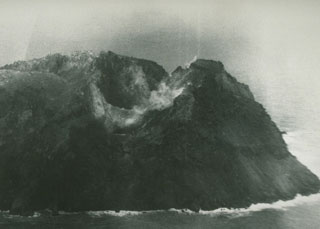Report on Matthew Island (France - claimed by Vanuatu) — March 1983
Scientific Event Alert Network Bulletin, vol. 8, no. 3 (March 1983)
Managing Editor: Lindsay McClelland.
Matthew Island (France - claimed by Vanuatu) White vapor from central crater
Please cite this report as:
Global Volcanism Program, 1983. Report on Matthew Island (France - claimed by Vanuatu) (McClelland, L., ed.). Scientific Event Alert Network Bulletin, 8:3. Smithsonian Institution. https://doi.org/10.5479/si.GVP.SEAN198303-258010
Matthew Island
France - claimed by Vanuatu
22.33°S, 171.32°E; summit elev. 177 m
All times are local (unless otherwise noted)
A Vanuatu government team arrived at Matthew Island on 10 March at 0700. The only activity noted was emission of wispy, white vapor from the central crater in the island's W (main) edifice.
Further Reference. Maillet, P., Monzier, M., and Lefevre, C., 1987, Petrology of Matthew and Hunter volcanoes, South New Hebrides Island Arc (Southwest Pacific): JVGR, v. 30, p. 1-29.
Geological Summary. Matthew Island is composed of two low andesitic-to-dacitic cones separated by a narrow isthmus. The Matthew name originates from an English mariner who sighted the island in 1788. Only the triangular eastern portion of the 0.6 x 1.2 km island was present prior to the 1940s, when construction of the larger western segment began; it consists primarily of lava flows. The western cone contains a crater that is breached to the NW and is filled by a lava flow whose terminus forms the NW coast.
Information Contacts: A. Macfarlane, Dept. of Geology, Mines, and Rural Water Supplies, Vanuatu.

